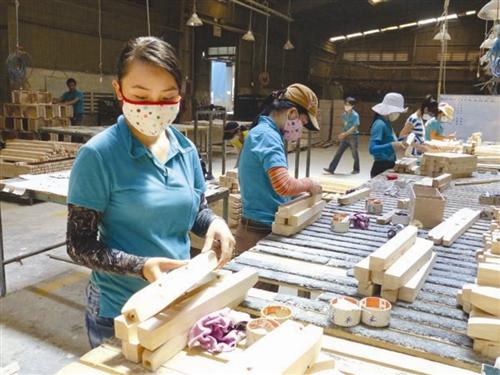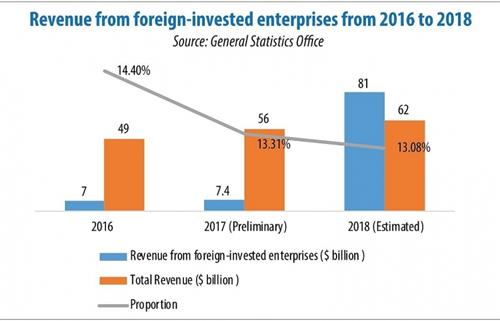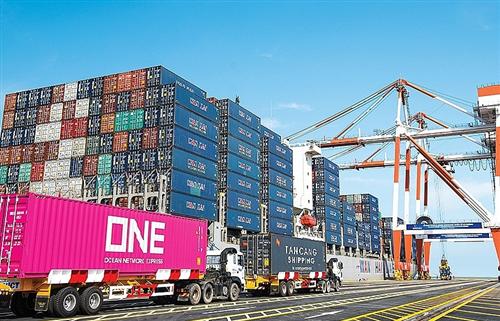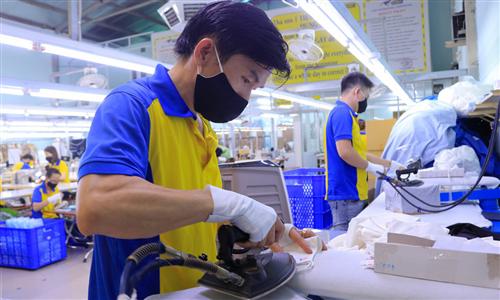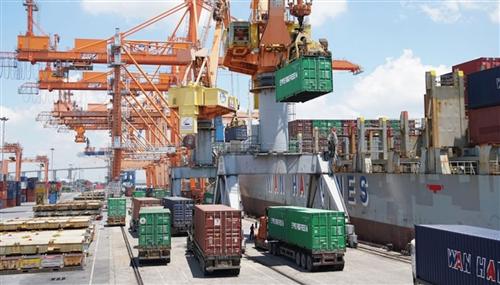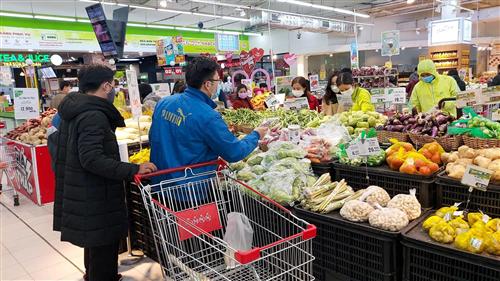Three decades of investment attraction victories in Vietnam
Three decades of investment attraction victories in Vietnam
Since the issuance of Vietnam’s Law on Foreign Investment in 1987 right after the doi moi policy was adopted, Vietnam has continuously revised its policies to keep improving the opportunities for international investors. Thomas Treutler, managing director of the Vietnam offices of Tilleke & Gibbins, pores over the country’s highlighted reforms over the past three decades.

Thomas Treutler, managing director of the Vietnam offices of Tilleke & Gibbins
|
Vietnam’s favourable policies have helped bring in more and more investment and increased exports. Foreign invested companies (FIEs) now account for 68 per cent of all of Vietnam’s exports. Importantly, projects involving foreign direct investment (FDI) have created many good jobs helping raise the GDP. As of early 2019, FIEs were directly employing 3.6 million people and indirectly employing another six million.
FDI has come a long way in over the past more than 30 years. Such investment picked up fast in the early to mid-1990s, with the lifting of the US embargo of Vietnam and investors from around the world heading to the country. A quarter of a century later, FIEs now contribute about 20 per cent of Vietnam’s GDP.
There have been some key policy changes that Vietnam made over the years to help attract investment.
Trade deal participation
Vietnam has taken well-calculated steps to participate in key multilateral trade organisations and build strong bilateral relationships which have bolstered investments into the country. Since joining the World Trade Organization (WTO), entering into bilateral trade agreements with the United States and others, and more recently joining major free trade agreements such as that with the European Union, Vietnam’s investment numbers continue to rise.
At the same time, via these agreements, other nations have gained access to the Vietnamese market and the competition has raised the quality of products and manufacturing processes in this country.
Decentralisation
In the early to mid-1990s, all FIEs had to be approved at a central level, which caused significant delays in the issuance of licenses. However, the government later decentralised the licensing process so that such projects could be approved at the provincial level or by industrial zone (IZ) boards of management, and can often be approved in weeks or a few months at most.
Clear timelines within which application dossiers had to be acted up were prescribed under the law, which added transparency to the licensing process. Similarly, representative offices can now be approved by the local departments of industry and trade.
This deregulation, combined with a relaxation of administrative burdens as well as advancements such as one-stop application centres and online filing of documents, has led Vietnam to be a country where investments are approved in a transparent fashion, and signals that the country is open for business.
Other changes levelled the playing field between local businesses and FIEs, such as having both types governed by common regulations under the Law on Enterprises and the Law on Investment rather than having a separate law on foreign investment. Initially, Vietnam only allowed overseas companies to have a term of 20 years, but this was later extended to 50 years.
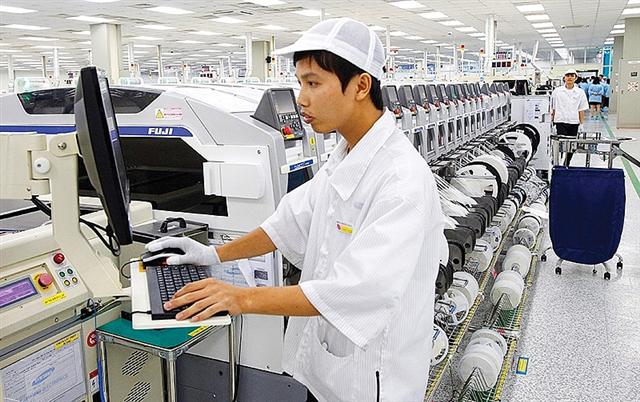
Global supply chain diversification should bode well for Vietnam in the near future, Photo: Le Toan
|
Industrial/high-tech zones
In one 1988 issue of Sai Gon Giai Phong, in the first year of effect of the newly adopted Law on Foreign Investment, there appeared an editorial relating to the idea of having something called Saigon Export Processing Zone in order to try to attract business as had been carried out successfully in Shenzhen, Hong Kong, Taiwan, and South Korea since the late 1970s.
Export processing zones became a reality and Vietnam soon started developing IZs, and later high technology zones.
IZs provide outstanding infrastructure for manufacturing to flourish. Over the years, the southern provinces of Binh Duong and Dong Nai near Ho Chi Minh City, and Bac Ninh and other northern provinces near Hanoi, have become manufacturing hubs, in part due to their investor-friendly policies, and this spread throughout many regions and provinces. In 2019, 65 per cent of all investments in Vietnam were in the manufacturing sector, which is a good signal for the future.
Intellectual property
In the 1990s, Vietnam was often criticised as not being strong in protecting intellectual property (IP) rights, and this was often cited as a reason the country would struggle to attract research and development (R&D), or value-added manufacturing operations. However, with Vietnam’s accession to the WTO, and the implementation of the Trade-Related Aspects of IP Rights in Vietnam, Vietnam’s IP laws have for the last 15 years been compliant with international standards.
Importantly, over the last 15 years, laws have constantly improved and even surpassed those of neighbouring countries. Vietnam’s courts, the Ministry of Science and Technology, and the Vietnam IP Research Institute in recent years have supported innovative multinational companies in enforcing complex patent rights in the areas of pharmaceuticals, medical devices, and electronics.
For example, several patent infringement cases in Binh Duong were ruled in favour of research-based pharmaceutical innovators, and significant amounts of damages and attorney fees were awarded.
The Vietnamese courts are building capacity in IP and there has been a major shift towards handling cases in civil courts, thus paving the way for compensatory damages and attorney fees for rights holders which adds to the deterrent effect.
These recent developments have sent a strong signal to investors that Vietnam is a safe country in which to conduct R&D, and high-tech industries can flourish in the country. Similarly, Vietnam’s 389 Committee, market surveillance departments, and economic police are very active in combating counterfeit goods.
Tax and customs reforms
Over the years, Vietnam has consistently taken steps every few years to make its tax regime applicable to investors and employees more and more attractive. Vietnam, while still having relatively high personal income tax (PIT), has taken steps over the years to improve its PIT regime especially to help local employees. In the mid-1990s, with Vietnam’s onerous supplemental PIT system, effective tax rates could balloon to over 70 per cent for local employees. Those large tax rates hindered FIEs from offering high salaried positions to local employees in some cases.
However, supplemental income tax was eliminated, the playing field was gradually levelled, and the effective PIT rates became manageable. This helped create more opportunities for all. In 2004, Vietnam eliminated its tax on repatriated profits, which helped make the tax regime more attractive to investors.
Other tax policy changes also helped make Vietnam a more attractive destination to investors, such as the introduction of the VAT system, and reductions in corporate income tax (CIT). The CIT rate was reduced from 25 to 22 per cent in 2014, and then down to 20 per cent in 2016.
Vietnamese customs authorities participate in a broad range of international projects to co-ordinate activities, introduce modern technology, and introduce best practices in clearing goods and monitoring shipments for IP rights violations. Other key advances were the elimination of export permits and export quota, which liberalised the trade sector and led to increased trading prospects.
Open law policies
In the early 1990s, law firms such as Tilleke & Gibbins, which set up a representative office in 1992, moved toward Vietnam, followed by other firms when the Ministry of Justice started licensing foreign law firms. Major global accounting firms have also been active in Vietnam for 25 years. These organisations, along with outstanding local law firms, have helped guide investors and help facilitate funding into Vietnam. The country has had an open policy marked by excellent co-operation between the MoJ and law firms, to allow these organisations to operate broadly and make a strong contribution.
Institutional partnerships
The government, through its relevant ministries and the Vietnam Chamber of Commerce and Industry (VCCI), has fostered excellent co-operation with foreign business associations such as the VCCI’s European and US counterparts and others.
Through individual dialogues with business associations and the Vietnam Business Forum, foreign investors have had a good and consistent opportunity to provide input to the government on policies to help the business environment. This co-operation has led to many good initiatives in reducing administrative burdens for businesses, and the introduction of beneficial policies for investors.
Poised for a bright future
Given Vietnam’s outstanding performance in controlling the ongoing coronavirus situation which has included strong public policies, transparency, and providing international aid to other countries, Vietnam’s leadership role in the region has been highlighted, which is very timely given that this year Vietnam is appointed as ASEAN chair.
With this strong regional leadership position, coupled with the fact that many nations want to diversify their supply chains, the country should be poised to receive more quality investment in manufacturing this year and next.



